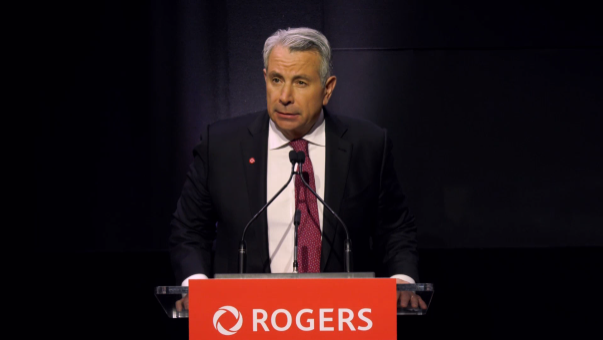
Bell alleges it has approached Rogers about terms and didn’t hear back
By Ahmad Hathout
OTTAWA – Rogers is accusing Bell and Telus of delaying its requests to attach wireless equipment on their poles and is asking the CRTC to make an interim order granting those requests on an expedited basis.
Rogers said in a Part 1 application filed earlier this month and published Wednesday that Telus had invited it to apply for attachment permits last year, but “abruptly changed its position” on the basis that the CRTC said it would be reviewing the wireless attachment framework in a decision on wireline access it made in February.
The CRTC said it would launch a proceeding on how to streamline those small cell wireless attachments when it ruled in February that wireline attachments on those same poles should be done on a predictable timeline. In that decision, it also ruled that pole owners should share in the cost of pole replacements where a third party’s request requires that replacement.
Rogers is also accusing Bell, another pole owner, of simply refusing to process permit applications for those attachments since December 2019. In fact, Rogers and Videotron filed a Part 1 application on this matter three years ago, but no decision by the CRTC has been made on that application.
“It would be extraordinarily ironic if [the CRTC’s February order] – a decision intended to facilitate competing broadband network deployment – now allowed Bell and Telus to deny access to their poles for the deployment of competing 5G wireless network infrastructure,” Rogers said in its application.
“The decisions of Bell and Telus to refuse small cell access to their poles has had, and will continue to have, a profound effect on the deployment of Rogers’ broadband network,” Rogers added. “Small cells are a key enabler of 5G wireless technology. Poles are ideal supporting structures for small cells. While Bell and Telus have deployed their own small cells on their poles, they have blocked competing wireless providers like Rogers from doing so.”
Rogers said delays in getting permit approval adds additional costs that “are not recoverable.”
The cable company argues that the existing telco attachment tariffs apply to wireless equipment and that the CRTC’s February decision did not reverse that. It added that Bell’s and Telus’s terms and conditions for attachments on those poles do not distinguish between wireline and wireless equipment.
“Poles owned by Bell do not miraculously cease to be ‘Support Structures’ within the meaning of Bell’s [tariffs] because they can accommodate an antenna and because its affiliate, Bell Mobility, is required, by condition of its spectrum licences, to grant access to its wireless towers,” Rogers said.
But Bell said it has already addressed Rogers’s concerns in response to its 2020 Part 1, and because that process is still live, Rogers’s application is an “abuse of process” and should be denied. Bell said that it has already proposed an attachment agreement to which Rogers allegedly has yet to respond.
“Rogers has yet to provide any comments with respect to our proposed agreement,” Bell said in its response this month.
Bell, however, notes that the terms would be under the ISED’s tower and site sharing regime. Rogers says Bell told it its poles become “towers” for the purposes of wireless attachments, meaning its existing tariffs don’t apply to that type of equipment.
“Rogers is free to negotiate with Bell for that access,” Bell said in its response. “If the issue was so urgent that Rogers requires immediate interim relief, it could have approached Bell to negotiate said access under that regime at any time over the last three years. It has not done so.”
Bell also said the CRTC should reject the application because it already dismissed an application by Globalive to deal with similar issues on the basis that it presented duplicate issues that it would already be examining in that future proceeding.
Rogers is asking for a comment deadline of 10 days from the publishing of the Part 1 for an order approving its applications while the CRTC either makes a final determination on its application or a decision on a future consultation identified in the February decision.
Rogers says the telcos’ refusal to permit it small cell access is a breach of several sections of the Telecommunications Act, including the unjust discrimination provision in Section 27 (2) – on the basis that Bell and Telus have allegedly allowed themselves to attach on their poles but not their competition. But Bell denies this because it claims it already offers attachment agreements, including to Rogers.
Otherwise, Rogers argues the lack of action on attachments is harming competition in the industry.
The timeline on the Telus conflict provided by Rogers is as follows: Rogers initially applied to attach 30 small cells to Telus’s towers in April last year. Telus rejected the application on the grounds that it and BC Hydro, a co-owner of the poles, needed to work on a new application for small cells, according to Rogers.
In May, Telus informed Rogers that it would receive small cell permit applications on a trial basis using its existing wireline application form. In August, Telus told Rogers it has finalized a path for small cell permit applications. In December, Rogers submitted 13 small cell applications in accordance with the Telus guidelines, followed by Telus advising it in February this year that it would be processing the applications.
That February and in May, Rogers submitted an additional 86 small cell permit applications.
Then on May 29, Telus said it would no longer be processing the applications in light of the CRTC’s February decision.
Rogers calls Telus’s interpretation of the February decision “ridiculous.”
Screenshot of Rogers CEO Tony Staffieri



